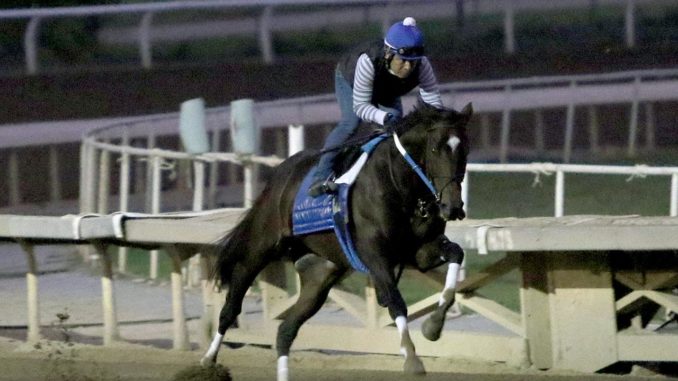
There’s an old horse racing cliché that the final quarter-mile or so of any race is “where the real running begins.”
As the field turns into the stretch and sprints to the wire, the best horses accelerate. They provide that eye-catching burst that can inspire chills.
But if you’ve been paying close attention to the races at Santa Anita during the current fall meet – and since racing returned in March, really – that burst has been notably absent in main-track races.
The finishing times have been slower, which indicates a heavier and deeper racing surface, but even if you view the races without a clock, just watch the horses.
RELATED: BRIS Southern California Speed by Circuit October 21-27
The grace and power of the Thoroughbred, which contributes greatly to that surge of acceleration, is often missing from stretch runs, as horses grind away to the finish.
The horses we’ve run, most of them have run well and they’ve stayed sound
Richard Mandella
While the result may not be visually appealing, it is by most accounts safer from a fatal-breakdown perspective, which is a top consideration for a racing facility that has been at the center of controversy in 2019.
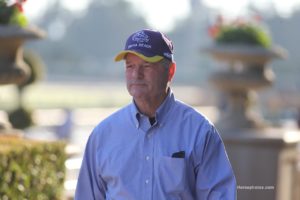
“The horses we’ve run, most of them have run well and they’ve stayed sound, so I have no complaints about it,” Hall of Fame trainer Richard Mandella said. “It’s deeper than it usually is, and it’s difficult to gauge the medium maidens in their first starts, but if they stay sounder, who cares?”
A refrain from horsemen at Santa Anita in recent years is similar to what Mandella described – sometimes it’s hard to gauge which horses will handle the dirt track the first time they run on it. With so many horses shipping in from out of town for the Breeders’ Cup, this presents a significant concern from a handicapping perspective.
Picking a winner is hard enough. Now you have to worry about whether your out-of-state selection will like the racetrack?

“It’s a heavy track and it plays heavy,” trainer John Sadler said. “Certain horses can’t handle it and some can. It’s a tough track to run over…It’s tough. It’s a horse-by-horse basis.”
This aspect has been something noted for some time by public handicappers, those who pour over every race and replay to study the circuit.
“It’s a very laboring track, and it’s not pretty. Horses can look done at the quarter pole, but they just out-stagger the rest to the wire,” horse owner and public handicapper Jon Lindo said. “Fitness is paramount. It’s a very sandy track, so I think getting in behind horses and getting kickback discourages horses coming from too far off the pace. I don’t like horses going wide in races, but you can stalk and still finish OK out there, because you haven’t eaten that dirt. You see horses behind covered with sand coming back.”
Daily Racing Form handicapper Brad Free has made similar observations ahead of the Breeders’ Cup, so much so that he is leery of backing out-of-state contenders on the dirt.
These horses that are shipping in to this racetrack – I suspect many of them are going to struggle
Brad Free
“These horses that are shipping in to this racetrack – I suspect many of them are going to struggle, because many of the horses who are here struggle,” Free said. “You see it when they finish. They’re spread out from here to tomorrow.
“That’s one reason why I’m extremely reluctant to back any horse from New York or Kentucky – main track only. Particularly so horses coming from behind. These horses are potentially going to drop back and get (kickback) in their face, and they’re just going to run around the track and not make a move. If they get back there, take the kickback and struggle with this slow surface, they might just say, ‘I’m done.’”
But Free is also hesitant to lean on anecdotal observations, so he put them to the test, and got mixed results.
For sprints the data, albeit limited by the short fall meet, is clear.
“There’s been 26 races at six furlongs this meet, with 15 wire-to-wire (victories) and only one from way back,” he said. “Does that mean you should just back a speed horse? No. I think it’s like a wet track. Horses that handle a wet track are up (near the front of the field) because they’re handling it. The horses that can’t handle it are dropping out of it and aren’t making a run.”
For two-turn races, the data paints a different picture. Winners in two-turn races during Santa Anita’s fall meet have had varied running styles.
“If I’m going to be reluctant to back a closer around two turns, do I have the data to support that? I don’t,” Free said. “The data doesn’t support what I intuitively believe.”
But those impressions might be influenced by the level of racing during the meet. The recent racing at Santa Anita has not all been at the level of the Breeders’ Cup, which features many of the most talented horses in the world. Another racing maxim is “good horses can run on anything,” and that could very well be the case this weekend.
“The good horses tend to adjust,” Mandella said. “The really good ones, we can tell (over this track). The really bad ones, we can still tell, but we always could. But there’s a bigger bell shape in the middle – trying to tell if they’re 20 or 30 or 50 (thousand dollar) claimers, but so what? Run them and you’ll find out.”
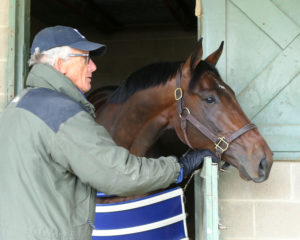
“The track is the same for everybody, that’s the bottom line,” trainer John Shirreffs said. “For a long time we had very fast tracks in California. Now we don’t have the fast tracks we had in the past, but most of the country doesn’t have fast tracks, so it might be OK for (horses shipping in).”
Others aren’t as confident talent will always win out in the main-track races.
“Here’s the deal – you don’t know,” trainer Richard Baltas said. “It helps to train over the surface, especially in route races. The sprints, you can get away with it. I was telling people at Del Mar (which has a similar tiring track), you can’t ship in on top of a race and win.”
Lindo and Free tended to agree with that sentiment – don’t be surprised if a horse who has exemplary form just doesn’t seem to fire on the dirt at Santa Anita.
“Horses are going to throw in goofy races, and you’re going to shake your head and go, ‘I don’t know why,’” Lindo said. “Especially in the 2-year-old races, they haven’t seen anything like this. Santa Anita used to be a hard, fast track, and (West Coast) horses used to ship to places like Belmont and would drown there. It’s come full circle.”
This surface this fall, and since we came back in March, is extremely slow
Brad Free
“This surface this fall, and since we came back in March, is extremely slow,” Free said. “Slower than I can recall. These horses are going to be coming onto a racing surface unlike any they’ve ever been on before.”
So who, from the out-of state contenders, might have an advantage?
More than a few shipped in early, and Shancelot (Breeders’ Cup Sprint) even has a race over the track, finishing second by a head to Omaha Beach in the Santa Anita Sprint Championship (G1) on October 5.
Steve Asmussen’s Breeders’ Cup string, including race favorites Mitole (Sprint) and Midnight Bisou (Distaff), also came to California early to get several works over the surface.
Preakness (G1) winner War of Will hasn’t been in the Golden State as long as the Asmussen crew but has logged two works over the Santa Anita main track in preparation for the Breeders’ Cup Classic (G1). Trainer Mark Casse, who has had ample Breeders’ Cup success with horses shipping in the week of the event, initially advised against it, but owner Gary Barber (who also has horses in California with other trainers) felt it was important to get works over the surface. Casse has already seen improvement in the War Front colt.

“Of course we don’t know what’s going to happen on Saturday, but I would say, in War of Will’s case, it was a good move,” Casse said. “I though he worked well over the track the first time, but the consensus is he worked even better the second time. His half-mile breeze the other day — I don’t know if you could ask a horse to go any better than that…Right now I would say Gary was right.”
RELATED: Find complete TwinSpires coverage of the Breeders’ Cup in one spot!

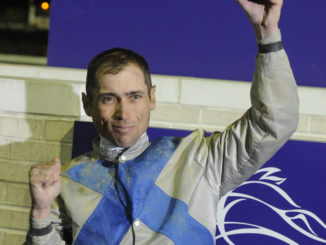
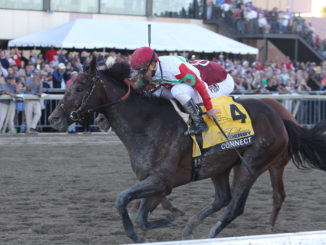
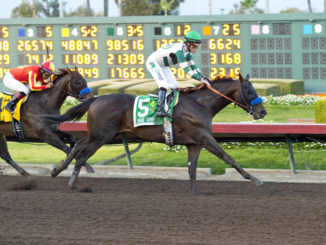
Thank you for the information.
Looking forward to a great weekend of racing.
Mr. Vitamin came from far, I mean really far back to win at 40-1. And he was a first time claiming starter. Even the track announcer was amazed. I have to disagree with you all. The tables will turn & closers will win.